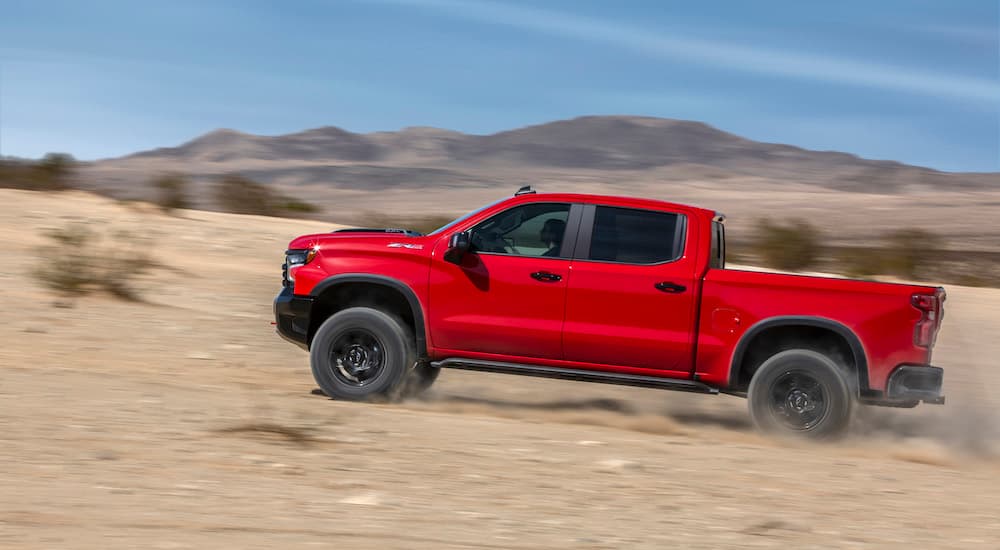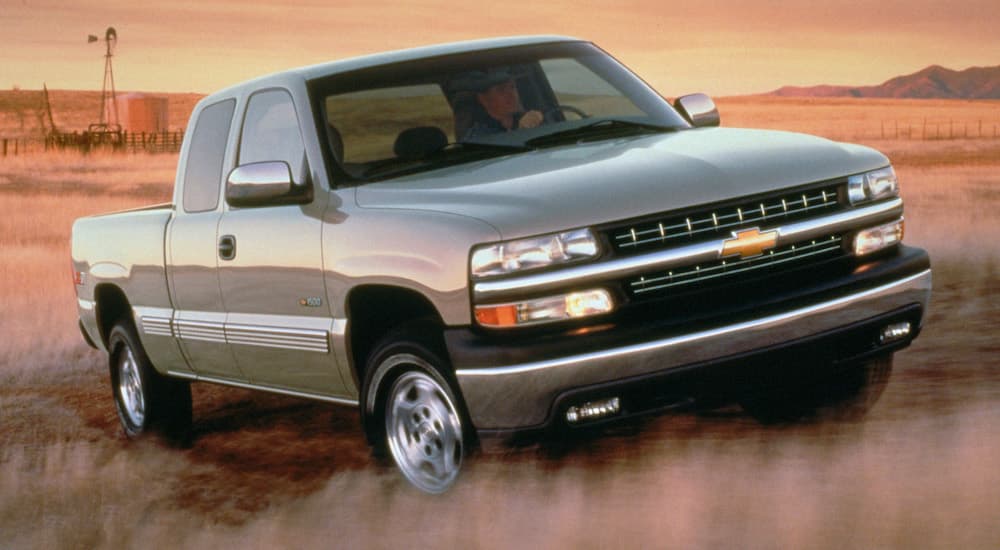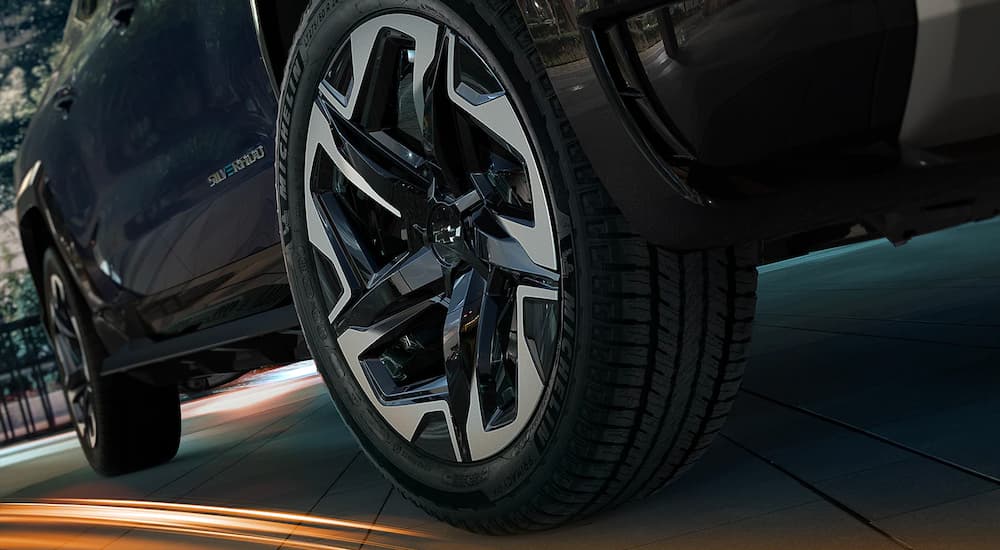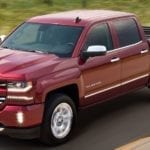So, you’re looking for a Chevy Silverado dealer as a possible new vehicle. Is it because you know that no one makes a truck like Chevy? Is it because you know when you buy a Chevy, you are buying years of quality and experience? Is it all of that and then some? Maybe, it’s because Chevy has been pushing the boundaries of what a truck can do. Chevy has been a pioneer in the truck world since the twenties when they were the first truck manufacturer to introduce an overhead-valve six-cylinder engine.
In the 1950s, they did it again when they introduced the first wraparound windshield in the truck industry. Fast-forward 50 years, and Chevy once again pushes past expectations with the revolutionary Quadrasteer technology. What is Quadrasteer, you ask? Well, unfortunately, despite its pure genius, GM discontinued it before it had a chance to truly show what it was capable of. Thankfully, it may be getting a second chance courtesy of four-wheel steer technology. So, why did it get the boot, and why is it getting a reboot now? Let’s see if we can figure it out.
Maneuvering Made Easy
In 2002 Chevy changed things when they introduced the Quadrasteer technology, developed by GM and Delphi Automotive Systems. In case you weren’t sure how GM and Chevy relate, GM is the parent company of Chevy. Quadrasteer, or QS4, allowed for better responsiveness when steering at low speeds. This system was designed for use on trucks and worked with the rear wheels. The system could detect input and would respond accordingly. When driving at higher speeds, the system would turn the rear wheels in the same direction as the front wheels. This increased stability and control when taking turns at higher speeds. Plus, when towing, this decreased the chance of damaging suspension, making it safer to tow.
Lower speeds resulted in the system turning the rear wheels in the opposite direction of the front wheels. This wheel adjustment made a huge impact on the turning radius of the truck. It offered much more flexibility when turning into tight spaces, like parking. It also improved the turning radius when slow cornering. Anyone who has driven a truck or seen someone drive a truck knows that trucks can be a little difficult to maneuver.
Industry specialists were shocked at how a truck could almost replicate the turning radius of a sedan. This type of handling was unheard of and was an incredible feat for the time. Though it was first available on the Silverado, it was expanded to include other trucks and larger SUVs, like the Chevy Suburban and the GMC Sierra. A control panel was conveniently located on the vehicle’s dash, allowing quick access for the driver to shift modes. The system offers 2-wheel steer, 4-wheel steer, and 4-wheel steer tow.
The End of a (Very Short) Era
Unfortunately, this technology didn’t last long. It was only available on full-size trucks and SUVs during 2002-2005. One reason that Quadrasteer didn’t last, despite its clear success, was the price. Originally, the option was available for an additional $5,600, which is quite high for a single add-on. GM and Delphi tried to drop the price, hoping it would entice more buyers, but even at a $2,000 price point, there wasn’t enough interest.
Additionally, the gear that went with Quadrasteer was heavy and added too much weight to the truck; almost 300 lbs were added as a result. However, the benefits of this added weight still outweighed (see what I did there) the drawbacks. In the overall scheme of things, the system did not have enough negative aspects to warrant its demise. It didn’t appear to impact safety and only slightly impacted the truck’s MPG.
According to the National Highway Traffic Safety Administration, the 2002 Chevy Silverado scored a higher safety rollover rating than other comparable trucks released that year. Additionally, the overall design of the Silverado, combined with the Quadrasteer tech, allowed it to tow a higher load, with a max of 9,200 LBS. Those who knew about this technology were excited to put it to good use. Regrettably, it didn’t seem that too many people did know about it.
Whether lack of public awareness resulted from inadequate advertising or simply not enough advertising, some GM reps believed that this is what added to its downfall. Without the public understanding just how revolutionary this tech was, it floundered. But, as I mentioned before, this ends with a pretty exciting comeback. If you are looking for a used Chevy Silverado with the Quadrasteer, you’re in luck. These classics typically go for under $10,000 and seem to hold well. Chevy had made some major overhauls to the 2002/2003 model, and as far as used vehicles go, you can’t beat going with one equipped with technology ahead of its time. However, if you want that tech and then some, you are in for a treat.
Out With the Old, in With The…Old?
Truck enthusiasts were thrilled to discover that Chevy had not abandoned the idea of the Quadrasteer entirely. When Chevy announced the new, all-electric Silverado EV, fans were thrilled to hear about its familiar technology. Now you would think that the major plot point here is that the new Silverado is all-electric. While that is pretty cool, for hardcore truck lovers, the return of the Quadrasteer really ignited their fire.
The new Silverado is equipped with four-wheel steer technology. Under a different name but still with the same awesome technology, four-wheel steering provides better truck agility and turning radius, just like before. Following the same principles, the wheels turn to improve the turning radius and increase stability when trailering. Four-wheel steering engages automatically when in automatic mode. As before, the system turns the rear wheels opposite the front at low speeds. This is now referred to as “out-of-phase” turning, which sounds pretty cool. At higher speeds, when the rear wheels turn the same as the front, it’s now called “in-phase” turning.
The new system is doing more than just improving maneuverability and stability in large vehicles. Thanks to the other advancements that have come along since Quadrasteer first came out, this technology can now be applied to off-roading as well. The system uses an “out-of-phase” turning in off-road mode to help with adverse terrain. Then in terrain mode, which further increases the wheel pivot, allows for even better maneuverability.
Lastly, this system has been modified further to include an additional mode that sounds quite cool. It’s called CrabWalk Mode, and unfortunately, it is not currently available on the new Silverado, but that doesn’t mean it isn’t neat. CrabWalk Mode uses the tech to turn the front and rear in the same direction, allowing the vehicle to move to the side to avoid obstacles. If only the original Silverado could have seen such a sight.
Quadrasteering Makes Its Triumphant Return
It is always exciting to see something from our past make a comeback. Movies get redone, clothing styles become popular again, and trends that should have stayed buried rise from the grave. Sometimes though, we get lucky enough to have innovations that were too ahead of their time find their way back to us. That’s exactly what has happened here with the 2024 Chevy Silverado EV. The 2002 model paved the way for old and new to come together in the most wonderful way possible. The Silverado EV is an incredible example of what innovation and perseverance can achieve. So, whether you like the original or the remake, Chevy has proven they know how to make a great truck with innovative features.






